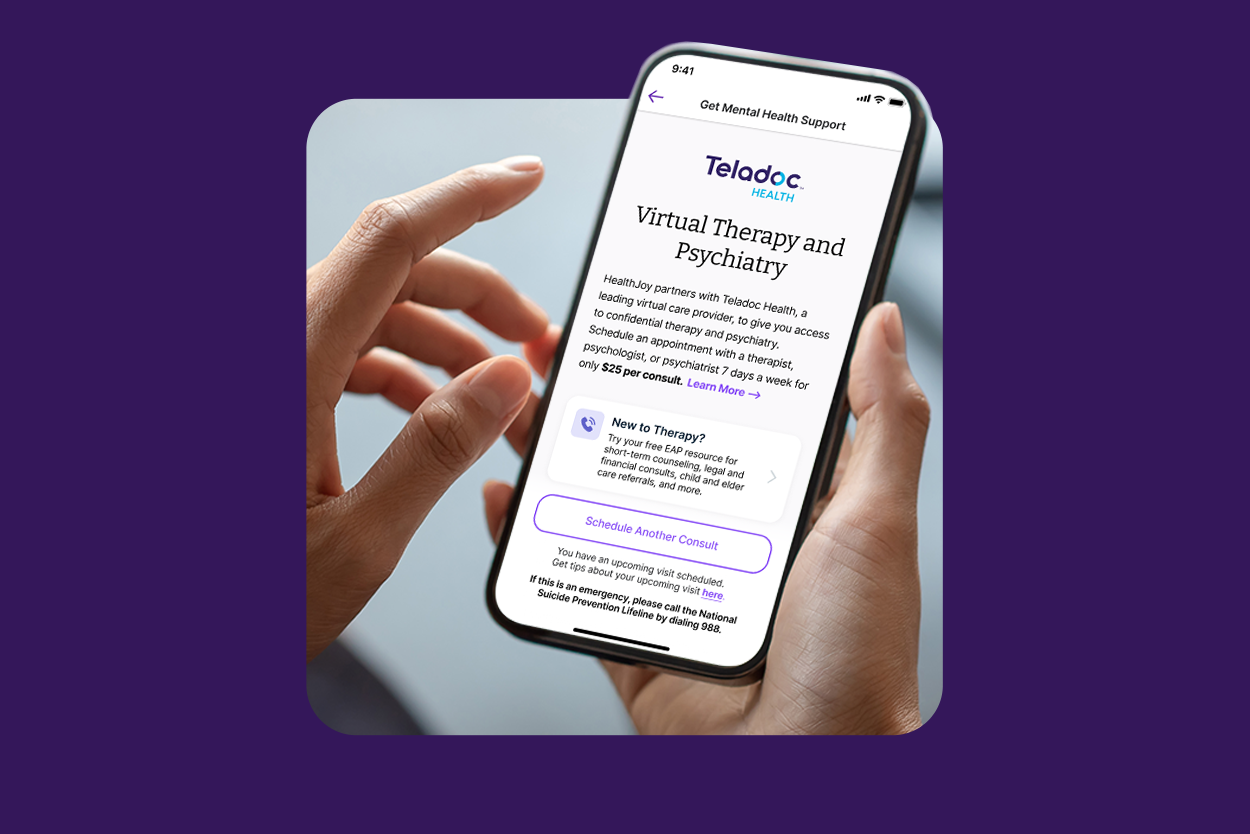How Does Captive Insurance Work and What are the Benefits?
Captive insurance and the way firms advertise it can seem mysterious. In reality, captives are not all that different from self-insuring. By creating...
Connected Navigation Platform
Guiding to high-value care
Behavioral Health
Foster a mentally healthy workplace
EAP
Supporting holistic wellbeing
Virtual MSK Care
Reimagining musculoskeletal care
Virtual Primary Care
Powered by smart navigation
Surgery Centers of Excellence
Best-in-class surgical outcomes
Virtual Urgent Care
Immediate care, any hour of the day
Chronic Care
A new approach to chronic care
Integrations
Flexible to any strategy

If you ask today’s job hunters to describe what they want from employee benefits in three words, they might say; flexibility, mobility, and security. The job market of today is becoming more diverse and increasingly occupied by millennials. The latest wave of employees isn’t satisfied by default, cookie-cutter benefits package that a company has been offering for years. When compared to past decades, job hunters today have a vastly different mindset not only in how they define work but also regarding what they expect from their workplaces. They are prioritizing benefits, wellness, and culture, instead of the than the straightforward and traditional prioritization of income. This is a generation that is ever-so aware that money doesn’t buy happiness. Glassdoor reports 4 in 5 workers prefer more and better employee benefits to a pay raise.
Even as job seekers’ mindsets are shifting, keeping HR on their toes, one thing remains constant: health insurance is the number one most-valued employee benefit. By understanding today’s evolving labor market as well as why health insurance continues to be the most desired benefit, HR strategists will finally be able to design a benefits package for their employees that fits just right. After all, tuning into what employees want from benefits may provide the advantage employers need to win the best talent in the market.
By 2020, the bulk of the working population will be millennials and three-quarters of U.S. employees will be part of the mobile workforce. The rise of a digitally connected workforce has led to an increased ability and desire to break out of the traditional 9-to-5 work-day spent in a cubicle. Mobility has led people to champion things like remote work, flexible hours, and paid time off.
Convincingly, the aforementioned Harvard Business School study reveals that the next four priorities on the job seeker’s list following health insurance are more flexible hours, more vacation time, work-from-home options, and unlimited vacation, respectively. It’s noteworthy that 4 of the top 5 most-valued employee benefits all have to do with workplace flexibility.
This desire for flexibility shows that our lives are being reshaped by mobile technology. We store our thoughts, information, and files in the cloud and access them on demand with ease. We feel empowered by the unlimited knowledge available at our fingertips through the Internet. We are the information generation, where knowledge is transmitted with incredible ease and communication happens instantaneously. It only makes sense that workers no longer feel the need to be constantly chained to their office desktops to get their work done. No matter where an employee chooses to work, the gift of flexibility enables them to achieve increased productivity.
Despite all the hype about free food, massages, or fitness classes, a Harvard Business Review study finds that health insurance is still the most desirable employee benefit of job seekers today.
This fact should come as no surprise. The rising and unpredictable costs of healthcare make employee health benefits a clear choice and priority. People fear the unknown, and the cost of healthcare is unknown in several ways. Not only is it hard to find the exact prices of healthcare services and treatments, but the state of one’s health, as well as healthcare policy in the U.S., are equally unpredictable. Healthcare affects people’s lives financially, emotionally, and physically, and it is slowly but surely becoming unaffordable to purchase coverage on one’s own. For these reasons, robust healthcare benefits are a priority for job hunters looking for their next employer.
Employees are no longer happy with the typical carriers health benefits experience. Their expectations have changed, they want on-demand help, access to online doctors and all their benefits accessible right from their mobile phone. Companies that add on-demand healthcare guidance are the ones that will win the talent war. With unemployment at historic lows, can your company afford not to provide the best in employee benefits?

Captive insurance and the way firms advertise it can seem mysterious. In reality, captives are not all that different from self-insuring. By creating...

Selecting the best health plan option for you and your family can be a confusing task if you are unfamiliar with or don’t understand the ins and...

If you are responsible for managing employee benefits – phrases like “healthcare costs are skyrocketing” are the soundtrack narrating your work day.